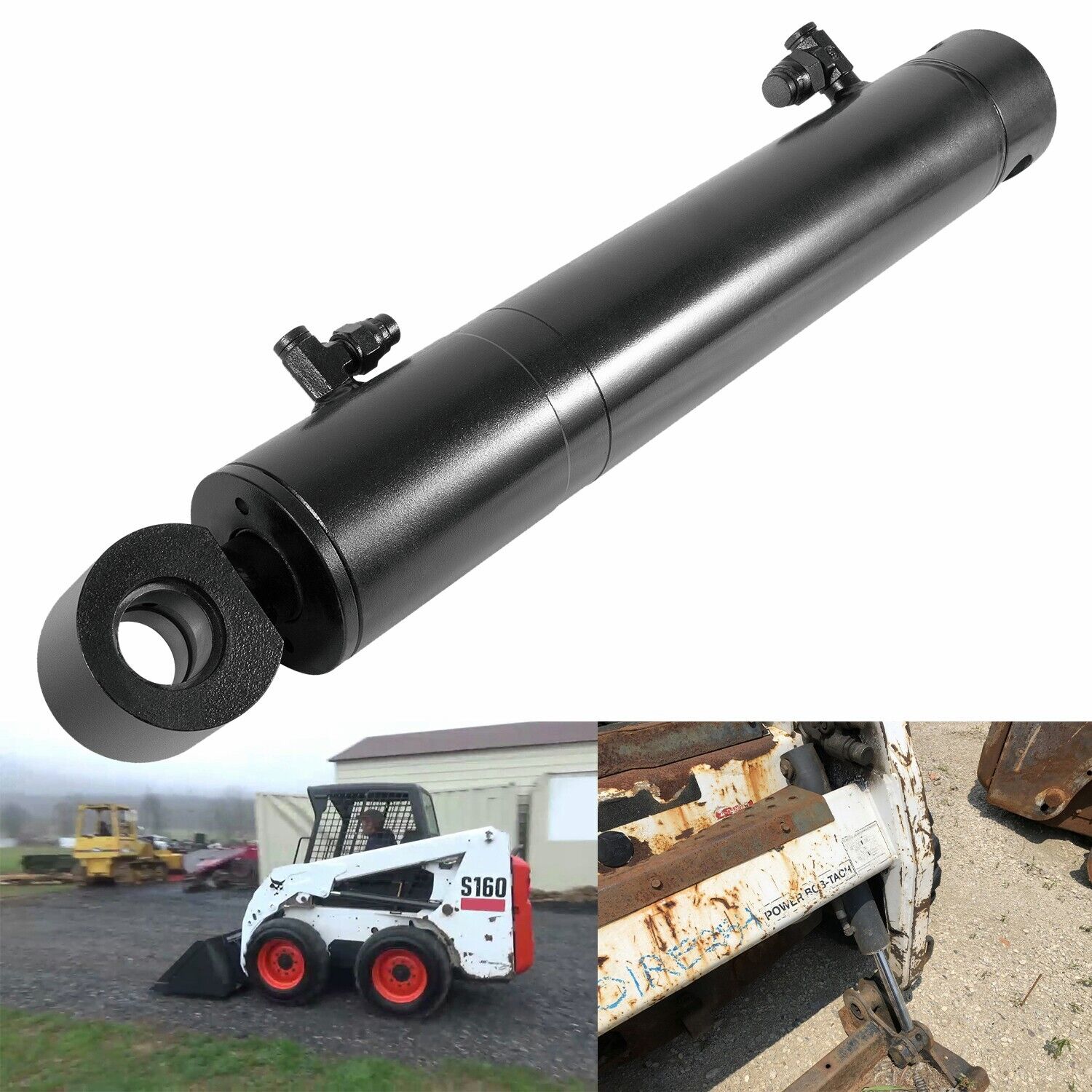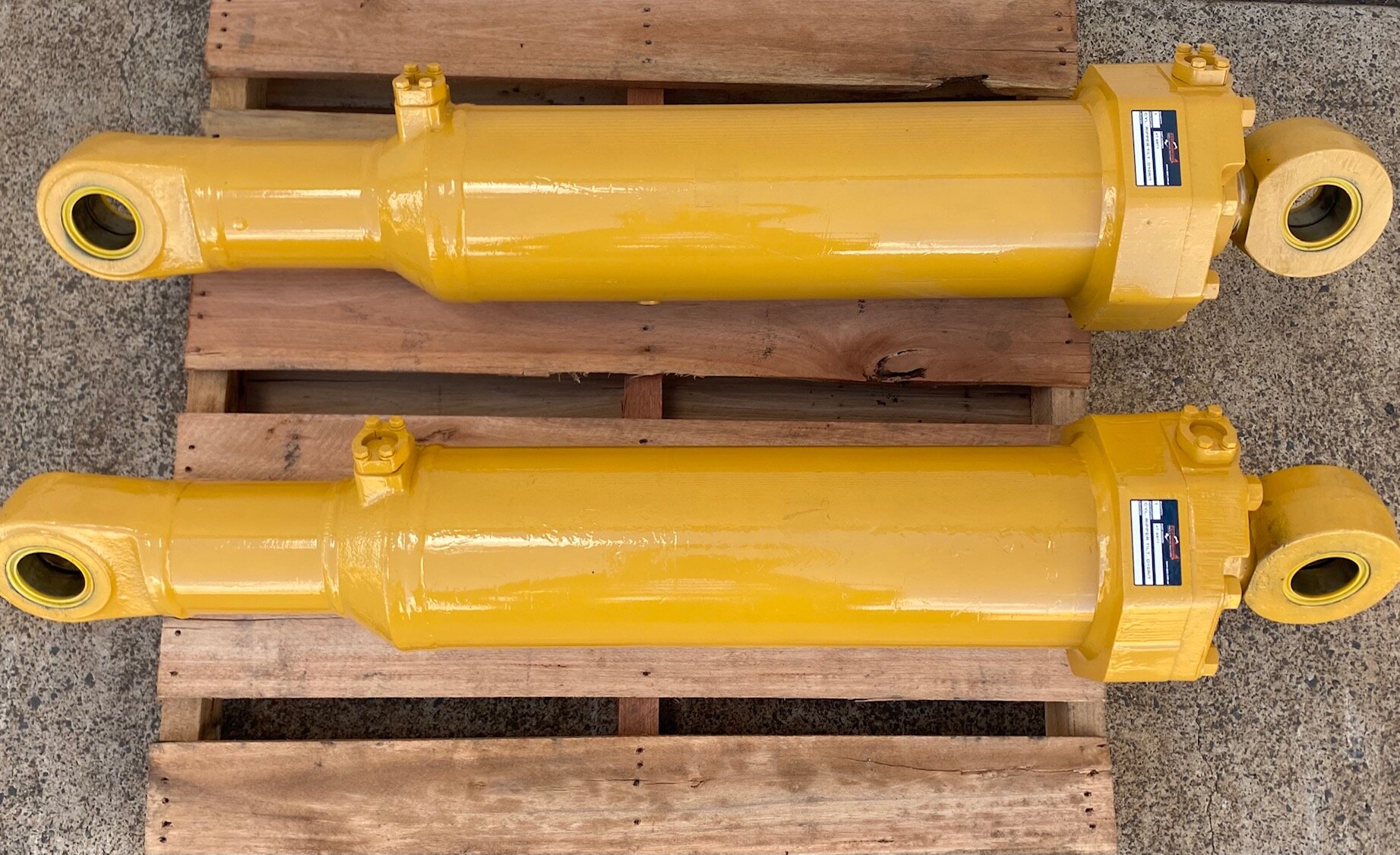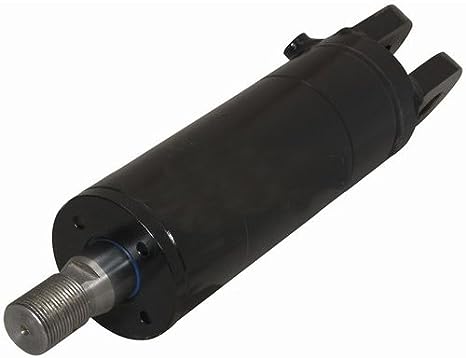Product Description
Promotional Various Mobile Crane Hydraulic Suspension Cylinder price for sale
Hydraulic Suspension Cylinder for Mobile Cranes
A mobile crane hydraulic suspension cylinder is a type of hydraulic cylinder used in the suspension system of a mobile crane. It plays a crucial role in providing support, stability, and adjustability to the crane's suspension, allowing it to adapt to various load conditions and terrain.
Here's an overview of the hydraulic suspension cylinder in a mobile crane:
-
Function: The hydraulic suspension cylinder is responsible for adjusting the suspension height and stiffness of the mobile crane. It helps absorb shocks, vibrations, and unevenness in the terrain, providing a smoother ride and enhancing the stability of the crane during transportation and lifting operations.
-
Hydraulic System: The hydraulic suspension cylinder is part of the crane's hydraulic system, which includes a hydraulic pump, reservoir, control valves, and hydraulic lines. The hydraulic pump pressurizes hydraulic fluid, typically oil or specialized hydraulic fluid, which is then directed to the suspension cylinder for adjustment.
-
Cylinder Design: The hydraulic suspension cylinder is usually a double-acting hydraulic cylinder. It consists of a cylindrical tube, a piston, and a piston rod. The piston divides the cylinder into 2 chambers, allowing hydraulic fluid to act on both sides of the piston to extend or retract the cylinder.
-
Suspension Adjustment: The hydraulic suspension cylinder is connected to the crane's suspension system, typically at multiple points. By adjusting the hydraulic pressure and flow to the cylinder, the suspension height and stiffness can be modified. This allows the crane's suspension to be raised or lowered, adapting to the load weight, ground conditions, and specific requirements.
-
Control and Operation: The hydraulic suspension cylinder is controlled by the crane operator through the crane's control system. The operator can activate the hydraulic valves or switches to adjust the suspension height and stiffness. This enables the crane to maintain proper ground clearance, optimize stability, and enhance overall performance during transportation and lifting operations.
-
Load Distribution: The hydraulic suspension cylinder helps distribute the crane's load evenly across multiple axles. By adjusting the suspension height, it ensures that the weight is properly distributed, minimizing stress on individual axles and tires. This improves the crane's stability, maneuverability, and tire longevity.
-
Maintenance and Inspection: Regular maintenance and inspection of the hydraulic suspension cylinder and the entire hydraulic system are essential for safe and reliable crane operation. This includes checking for leaks, ensuring proper lubrication, inspecting seals, connections, and hydraulic lines, and following the manufacturer's recommended maintenance schedule and guidelines.
The importance of Hydraulic Suspension Cylinder
-
Ride Comfort: Hydraulic suspension cylinders significantly contribute to improving ride comfort by absorbing shocks and vibrations caused by uneven road surfaces. The cylinders act as a cushioning mechanism, reducing the impact felt by the vehicle's occupants. This is particularly important in commercial vehicles, where long hours on the road can cause driver fatigue and discomfort.
-
Stability and Handling: Hydraulic suspension cylinders help maintain stability and control of the vehicle, especially during cornering, braking, and acceleration. By adjusting the suspension height and stiffness, the cylinders optimize the vehicle's weight distribution, ensuring better traction and minimizing body roll. This enhances handling characteristics, making the vehicle more stable and maneuverable.
-
Load Carrying Capacity: Hydraulic suspension cylinders are often used in vehicles designed for heavy loads, such as trucks and trailers. These cylinders allow for dynamic load leveling, where the suspension automatically adjusts to compensate for changes in load weight. This ensures that the vehicle remains level, improves stability, and prevents excessive strain on the chassis and tires.
-
Adaptability to Terrain: Vehicles equipped with hydraulic suspension cylinders can adapt to different terrains and road conditions. By adjusting the suspension height, the cylinders provide increased ground clearance when traversing rough or off-road surfaces. This capability is particularly important in industries like agriculture, construction, and mining, where vehicles often operate in challenging environments.
-
Safety and Control: Hydraulic suspension cylinders contribute to overall vehicle safety by improving braking performance and preventing wheel lock-up. They help maintain tire contact with the road surface, maximizing grip and reducing stopping distances. Additionally, by minimizing body roll and maintaining stability, hydraulic suspension cylinders enhance the vehicle's ability to avoid obstacles and maintain control in emergency situations.
-
Adjustable Suspension: Many hydraulic suspension systems offer adjustable features, allowing the driver or operator to customize the suspension settings based on specific needs or preferences. This includes adjusting the suspension height, stiffness, and damping characteristics. Such adjustability ensures optimal performance, comfort, and safety in various driving conditions or specific operational requirements.
-
Component Protection: Hydraulic suspension cylinders also help protect other vehicle components, such as the chassis, axles, tires, and cargo. By absorbing shocks and vibrations, they reduce the stress and impact on these components, prolonging their service life and minimizing maintenance and repair costs.
Our Company
We have a first-class independent R&D platform for assembly. The forklift cylinder production workshop has 4 semi-automatic lifting cylinder assembly lines and 1 fully automatic tilting cylinder assembly line, with a designed annual production capacity of 1 million pieces; the special cylinder workshop is equipped with semi-automatic cleaning and assembly systems of various specifications, with a designed annual production capacity of 200,000 essays. It has famous CNC machining equipment, machining centers, special equipment for high-precision cylinder processing, robot welding machines, automatic cleaning machines, automatic cylinder assembly machines, and automatic paint production lines. We have more than 300 sets of critical equipment running. The optimized allocation and efficient utilization of equipment resources ensure the precision requirements of the products and meet the high standard quality requirements of the products.
|
Forklift cylinder assembly shop |
Other types of cylinder assembly shop |
Welding
Painting & coating
|
Painting & coating line |
Fully automatic water-based |
Testing
To further improve product performance, and establish the leadership position of our hydraulic cylinder in the industry, our company and zjimee jointly established a Comprehensive performance laboratory of hydraulic cylinders, hydraulic valves, and hydraulic pumps; the lab is computer-assisted testing, using electro-hydraulic control technology, the test conditions preset by computer, which improves the test accuracy and system versatility, and the experimental data.
The automatic collection is realized through the application of sensors, and the output data, such as the internal leakage and load efficiency of the cylinder or the valve, are directly processed by the computer and converted to standard units (ml/min; %). At the same time, to ensure the working safety of the hydraulic system, the state monitoring function is carried out for key performance parameters, such as "oil temperature monitoring, liquid level monitoring, filter device monitoring," etc. Among them, the hydraulic cylinder test stand can test the performance of "load efficiency" and "internal leakage" by readings. At the same time, it is equipped with a grating ruler measuring instrument, which meets the requirements of all test items of hydraulic cylinder products in the national standard.
Our Factory
Packaging & Shipping
| Certification: | GS, RoHS, CE, ISO9001 |
|---|---|
| Pressure: | High Pressure |
| Work Temperature: | Normal Temperature |
| Acting Way: | Double Acting |
| Working Method: | Rotary |
| Adjusted Form: | Regulated Type |

How does a tilt cylinder contribute to precise equipment positioning?
A tilt cylinder plays a crucial role in achieving precise equipment positioning. It provides the necessary force and control to adjust the tilt angle of the equipment, allowing operators to position it accurately for various tasks. Here's a detailed explanation:
- Tilt Angle Adjustment: A tilt cylinder allows operators to adjust the tilt angle of the equipment. By actuating the cylinder, they can tilt the equipment forwards or backwards, facilitating precise positioning. The ability to fine-tune the tilt angle enables operators to align the equipment with specific targets or work areas, ensuring optimal accuracy and efficiency.
- Load Distribution: Precise equipment positioning is essential for maintaining proper load distribution. A tilt cylinder allows operators to adjust the tilt angle to distribute the load evenly across the equipment. This is especially important when handling uneven or imbalanced loads. By achieving precise positioning through tilt cylinder control, operators can optimize load distribution, minimize stress on the equipment, and enhance stability during operation.
- Contour Adaptation: In certain applications, such as land grading or earthmoving, precise equipment positioning is necessary to adapt to the contours of the terrain. A tilt cylinder enables operators to adjust the equipment's tilt angle to match the slope or shape of the ground. This contour adaptation capability ensures consistent contact with the surface, promoting uniform grading or excavation and achieving the desired results with precision.
- Height Adjustment: Some tilt cylinders also allow for height adjustment in addition to tilt angle adjustment. By extending or retracting the cylinder, operators can raise or lower the equipment's position. This height adjustment capability further enhances precise positioning, enabling operators to align the equipment at the desired elevation for specific tasks or working conditions.
- Integration with Control Systems: Tilt cylinders can be integrated with advanced control systems in modern equipment. These control systems may include electronic or hydraulic controls that allow for precise and automated tilt angle adjustments. By utilizing such systems, operators can achieve highly accurate and consistent equipment positioning, reducing human error and improving overall productivity.
- Operator Feedback: Tilt cylinders equipped with sensors or feedback mechanisms can provide real-time information to operators about the equipment's tilt angle. This feedback allows operators to make precise adjustments and ensure accurate positioning. By continuously monitoring the tilt angle, operators can maintain the desired position during operation and make necessary corrections as needed.
Therefore, a tilt cylinder contributes significantly to precise equipment positioning by enabling tilt angle adjustment, load distribution optimization, contour adaptation, height adjustment, integration with control systems, and operator feedback. These capabilities enhance the accuracy, efficiency, and versatility of equipment in various industries, including construction, material handling, agriculture, and more.

What are the advantages of using tilt cylinders in heavy equipment?
Using tilt cylinders in heavy equipment offers several advantages that enhance productivity, versatility, and operational efficiency. Here are the key advantages:
- Enhanced Flexibility: Tilt cylinders enable heavy equipment to tilt and adjust the angle of attachments or implements. This provides enhanced flexibility in various applications, such as grading, landscaping, material handling, and excavation. The ability to tilt attachments allows operators to precisely control the position and orientation, improving accuracy and efficiency in completing tasks.
- Improved Stability: Tilt cylinders contribute to improved stability and balance of heavy equipment. By tilting the attachments or implements to match the terrain or load conditions, operators can maintain better stability during operation. This is particularly beneficial in uneven or challenging terrains where maintaining stability is crucial for safe and efficient work.
- Increased Efficiency: Tilt cylinders enhance the efficiency of heavy equipment operations. By allowing operators to adjust the tilt angle without repositioning the entire machine, time and effort are saved. Operators can quickly and easily change the angle of the attachments, optimizing the equipment's performance and reducing the need for manual adjustments or additional equipment.
- Precise Material Control: Tilt cylinders enable precise control over the material being handled or manipulated. For example, in material loading or dumping applications, operators can tilt the bucket or attachment to precisely control the pouring or dumping angle. This level of control improves accuracy, minimizes spillage, and reduces material wastage, resulting in cost savings and improved operational efficiency.
- Versatility and Adaptability: Tilt cylinders enhance the versatility and adaptability of heavy equipment. With the ability to adjust the tilt angle, equipment can be used for a wider range of tasks and applications. Tilt cylinders allow the equipment to accommodate different attachments or implements, expanding its capabilities and making it suitable for various job requirements.
- Operator Comfort and Safety: Tilt cylinders contribute to operator comfort and safety. By allowing adjustments to the tilt angle, operators can maintain a better ergonomic position and reduce fatigue during prolonged operation. Additionally, the ability to control the tilt angle improves safety by providing better visibility and control over the equipment's working area, reducing the risk of accidents and damage.
The advantages of using tilt cylinders in heavy equipment make them integral components in industries such as construction, mining, agriculture, and material handling. Tilt cylinders enhance operational capabilities, increase efficiency, and improve safety, ultimately leading to enhanced productivity and cost-effectiveness.

What are the components and features of a tilt cylinder?
A tilt cylinder consists of several components and features that contribute to its functionality and performance. These components work together to enable controlled tilting or angling of components in heavy machinery. Here are the key components and features of a tilt cylinder:
- Cylinder Body: The cylinder body forms the main structure of the tilt cylinder. It houses the piston and provides support and stability during operation. The cylinder body is typically made of durable materials, such as steel, to withstand high loads and harsh operating conditions.
- Piston: The piston is a cylindrical component that divides the cylinder body into two chambers: the rod side and the head side. It is responsible for generating the necessary force to move the rod and perform the tilting action. The piston is sealed to prevent hydraulic fluid leakage between the chambers.
- Rod: The rod is attached to the piston and extends outside the cylinder body. It is connected to the component being tilted, such as a bucket or blade, in heavy machinery. The rod transfers the force generated by the piston to the attached component, causing the desired tilting movement.
- Hydraulic Seals: Hydraulic seals are critical components that ensure the proper functioning of the tilt cylinder. They prevent hydraulic fluid leakage and maintain the separation between the rod side and the head side of the cylinder. Common types of hydraulic seals used in tilt cylinders include piston seals, rod seals, and wiper seals.
- Hydraulic Fluid Ports: The tilt cylinder is connected to a hydraulic system through hydraulic fluid ports. These ports allow hydraulic fluid to enter and exit the cylinder, creating the necessary pressure and flow to control the tilting movement. The hydraulic fluid ports are typically equipped with fittings or connectors for secure attachment to the hydraulic system.
- Control Valves: Control valves play a crucial role in regulating the flow and pressure of hydraulic fluid within the tilt cylinder. They are part of the hydraulic system and allow the operator to control the speed, direction, and extent of the tilting movement. Control valves enable precise positioning and adjustment of the tilted component.
- Limit Switches or Sensors: Tilt cylinders may include limit switches or sensors to provide feedback on the position and angle of the tilted component. These safety features help prevent over-tilting or unintended movement, ensuring safe operation and protecting both the machinery and operators.
The features and components of a tilt cylinder are designed to withstand high loads, provide precise control, and ensure reliable and safe operation. The robust construction, hydraulic seals, hydraulic fluid ports, control valves, and safety features make tilt cylinders capable of performing controlled tilting actions in heavy machinery applications.
In summary, a tilt cylinder comprises key components such as the cylinder body, piston, rod, hydraulic seals, hydraulic fluid ports, control valves, and may incorporate safety features like limit switches or sensors. These components and features work together to enable the controlled tilting or angling of components, enhancing the versatility and functionality of heavy machinery.


editor by CX 2023-12-01